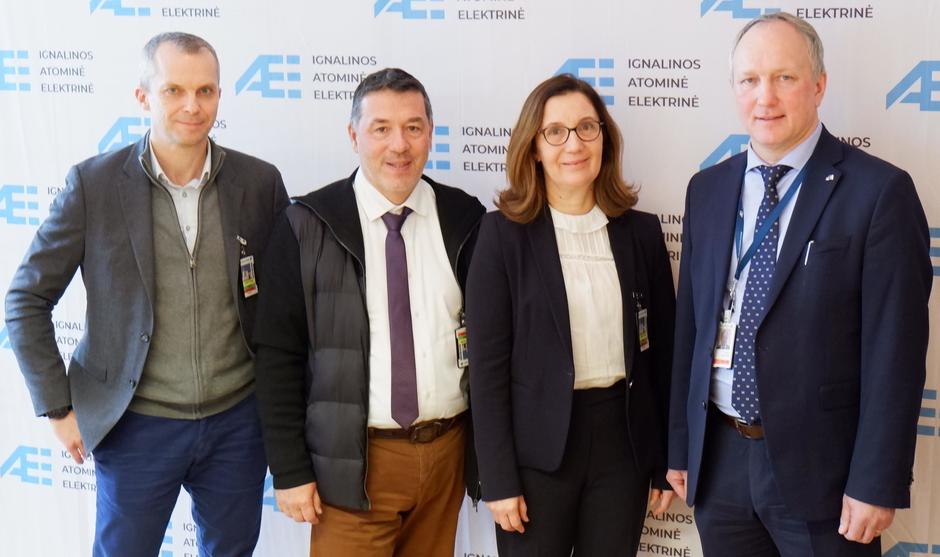 Graphitech, a joint venture established in 2020 by French companies EDF and Veolia, has signed a contract with Lithuania’s State Enterprise Ignalina Nuclear Power Plant (INPP) for reactor dismantling services. Under the four-year contract Graphitech will provide engineering solutions for the dismantling of the two Soviet-era RBMK reactors at INPP.
Graphitech, a joint venture established in 2020 by French companies EDF and Veolia, has signed a contract with Lithuania’s State Enterprise Ignalina Nuclear Power Plant (INPP) for reactor dismantling services. Under the four-year contract Graphitech will provide engineering solutions for the dismantling of the two Soviet-era RBMK reactors at INPP.
The consortium combines EDF’s nuclear industry expertise and decommissioning knowhow and Graphitech’s capabilities in the design of specialised machinery. These include deployment of remotely operated tools and long-distance intervention platforms for the dismantling of graphite reactors. Ignalina’s two RBMK units were shut down permanently in 2004 and 2009 in line with requirements for Lithuania’s membership of the EU.
Technology development is being carried out in EDF’s graphite reactor decommissioning demonstrator, using full-scale mock-ups and digital simulations, which are fully representative of the graphite reactor fleet. Graphitech believes Ignalina could be the first graphite-moderated reactor facility to be dismantled, making it an important test bed. Graphitech is already designing the tools and equipment for dismantling the Chinon A2 nuclear power plant in France, which is due to start by 2030, as part of a "first" in the Uranium Natural Graphite Gas (UNGG) dismantling programme.
Myriam Colacicco, Deputy Director of EDF’s Decommissioning and Waste Management Division and Head of Graphite Reactor Decommissioning said: “Our consortium brings unique skills in the design of tooling and methodologies for graphite reactor dismantling, including multi-criteria scenario analysis and costing as well as overall effective waste management. We look forward to supporting INPP in the development of the reactor core dismantling methodology.” The project is funded by the European Union Ignalina Programme.
Graphite moderated reactor decommissioning is a real problem for countries that used them – basically all the nuclear weapons states which used them for plutonium production. The UK also has its Magnox and AGR reactors to deal with, which were a spin off from the plutonium producers, as were Russia’s RBMKs. There is no solution as yet for dealing with irradiated graphite when these reactors are closed – research on this is underway in many countries.
However, Russia has already decommissioned and entombed one uranium-graphite reactor. Decommissioning of the former EI-2 plutonium production reactor at the Siberian Chemical Combine (SCC) was formally accepted as completed in 2015 – the first ever decommissioning of a commercial uranium-graphite reactor. Earlier in January Russia’s Experimental-Demonstration Centre for Decommissioning Uranium-Graphite Nuclear Reactors (UDC UGR, completed the dismantling and fragmentation of equipment and pipelines for two more of SCC’s industrial reactors – ADE-4 and ADE-5. Russia is also in the process of decommissioning its first two RBMK reactors at the Leningrad NPP, where a special engineering centre for the decommissioning of RBMK units (ODIC RBMK) has been set-up.
Image courtesy of IAE






